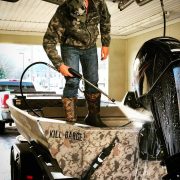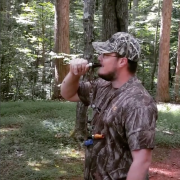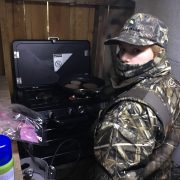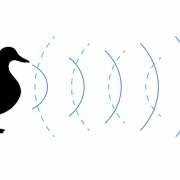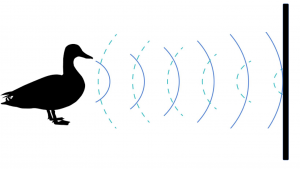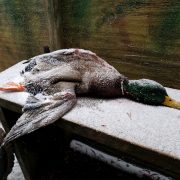Does a Duck’s Quack Echo
/in Duck Hunting /by Brian BurressWill a duck’s quack echo?
Well then, why do we never hear a duck’s quack echo?
February Checklist
/in Deer Hunting, Duck Hunting, Goose Hunting, Monthly Checklist, Turkey Hunting /by Brian BurressPan Seared Snow Goose Breast with Peppers and Onions
/in Goose Hunting, Recipe /by Brian BurressAdapted from: http://www.ducks.org/hunting/recipes/light-goose-recipes
Spring conservation snow goose season is upon us! With liberal limits, unplugged shotguns, and electronic calling, more and more people are making piles of white geese every spring. Somehow, the snow goose (aka Sky Carp) has gotten a bad rap when it comes to table fare. This is largely undeserved, and this recipe proves it. Try this out and let us know what you think. Have other recipes for snow goose? Share them with us.
Ingredients:
- 4 boneless snow goose breast halves, skin removed
- Olive oil
- 2 teaspoons Worcestershire sauce
- ½ teaspoon garlic salt
- 1 medium onion, sliced thin
- 1 green bell pepper, coarsely chopped
- 1 red bell pepper, coarsely chopped
- 2 garlic cloves, thinly sliced
- 1 cup tomatoes, seeded and chopped
- Salt and pepper to taste (I substituted Tony Chacere’s)
Slice goose breasts across the grain of the meat, then cube the meat. Combine Worcestershire, garlic salt, and enough olive oil to cover the meat in a bowl or zip top bag. Add goose, cover, and refrigerate at least 2 hours.
Put enough olive oil in a skillet to barely coat the bottom. I originally added too much oil, forgetting the peppers and onions will drain and create more juices in the skillet. Add onion, garlic, and peppers to skillet. Cook until onions are lightly browned. Remove goose from marinade and drain well. Discard marinade. Add goose and stir fry for 1 – 2 minutes. Try to not cook the goose past medium rare, as it will get tough. When goose is medium rare, stir in tomato and season to taste with salt, pepper, or other seasoning. Serve over rice.
If you like spicy food, you can add 1 teaspoon of Tabasco to the marinade and 2 minced jalapenos to the vegetables. I left this out since I enjoy heat, but my wife and young kids definitely do not!
Preparation tips:
- Be sure and slice the goose against the grain of the meat. Otherwise, the fibers of the meat will draw up during cooking and make for really tough bites.
- When slicing the onion, I first sliced it so that I had rings of onion, like you normally use on a hamburger. Then I sliced those rings in half.
- Keep the vegetables coarsely chopped, with pieces at least as big as a quarter. Keeping the vegetables bigger enables them to cook and stay somewhat crispy.
January Checklist
/in Deer Hunting, Duck Hunting, Goose Hunting, Monthly Checklist, Turkey Hunting /by Brian BurressStaying Warm (without products)
/in Deer Hunting, Duck Hunting, Goose Hunting /by Brian Burress esn’t hunt to come with you, one of the first things they mention is “no thanks, I don’t like the cold.” There are a variety of products on the market to help you keep warm, but what can you do to stay warm without purchasing a case of hand warmers? Here are a few techniques to use to keep warm during those late-season cold weather hunts.
esn’t hunt to come with you, one of the first things they mention is “no thanks, I don’t like the cold.” There are a variety of products on the market to help you keep warm, but what can you do to stay warm without purchasing a case of hand warmers? Here are a few techniques to use to keep warm during those late-season cold weather hunts.
Hand Not In Glove
Warmth Funnel
Cold Feet
Keep the Flow Going
Preserve the Core
Elevate Your Bottom
Halt the Breeze

